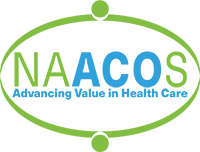NAACOS Calls for Greater Transparency in Innovation Center’s Work
WASHINGTON – Several healthcare organizations, including the National Association of Accountable Care Organizations (NAACOS), today called on CMS’s Center for Medicare & Medicaid Innovation (Innovation Center) to take a more public process for developing future value-based payment models and updating existing models While realizing we need to change the way health care is paid for and delivered, NAACOS and others tell Medicare’s top officials in a letter that providers need more clarity and stability in model design to encourage organizations to participate and move to higher levels of risk and reward. “ACOs have shown they’re committed to new care models, including those with higher levels of risk and reward, but they need more information on what the future holds if they’re expected to fully embrace the Innovation Center’s work,” said Clif Gaus, Sc.D., NAACOS president and CEO. “Our Next Generation Model ACOs have been waiting anxiously for months to see what future options will be available, and their experience could be shared to improve the Innovation Center’s work.” The letter was sent to Centers for Medicare & Medicaid Services (CMS) Administrator Seema Verma and Innovation Center Director Adam Boehler. The letter was signed by NAACOS, the American Medical Group Association, Association of American Medical Colleges, Health Care Transformation Task Force, Medical Group Management Association, National Coalition on Health Care, Next Generation ACO Coalition, Patient-Centered Primary Care Collaborative, and Premier. The letter states the Innovation Center’s work needs a public process to allow stakeholder comment on all model design elements prior to finalizing the model. Model changes also need to be made and communicated clearly and publicly. Specifically, the groups recommend establishing a process similar to annual changes in Medicare Advantage, where certain policy updates are communicated publicly with some opportunity for stakeholder feedback, but without the formal notice-and-comment rulemaking. Currently, the Innovation Center often communicates changes through contract amendments, sometimes in the middle of a performance year. “There is a wealth of expertise from those on the front lines of healthcare delivery and payment transformation—knowledge that should be solicited throughout a more public process of developing and updating models,” Gaus added. Earlier this year, House Ways and Means Committee leaders Richard Neal (D-Mass.) and Kevin Brady (R-Texas) called on greater transparency in the Innovation Center’s work, saying its model-development process has “historically been opaque to Congress and to stakeholders.” The ACO model is a market-based solution to fragmented and costly care that empowers local physicians, hospitals, and other providers to work together and take financial responsibility for improving quality, enhancing patient experience, and reducing waste. Providers can earn back part of the savings they generate for Medicare by hitting pre-determined spending goals while also meeting standards for the quality of care they deliver. Importantly, the ACO model also maintains patient choice of clinicians and other providers. Origins of Medicare ACOs date back to the George W. Bush administration, and ACOs have been instrumental in the bipartisan goal to shift the health system to value-based care. A central part of the ACO concept is to transform health care through meaningful clinical and operational changes to put patients first by improving their care and reducing unnecessary expenditures. |
